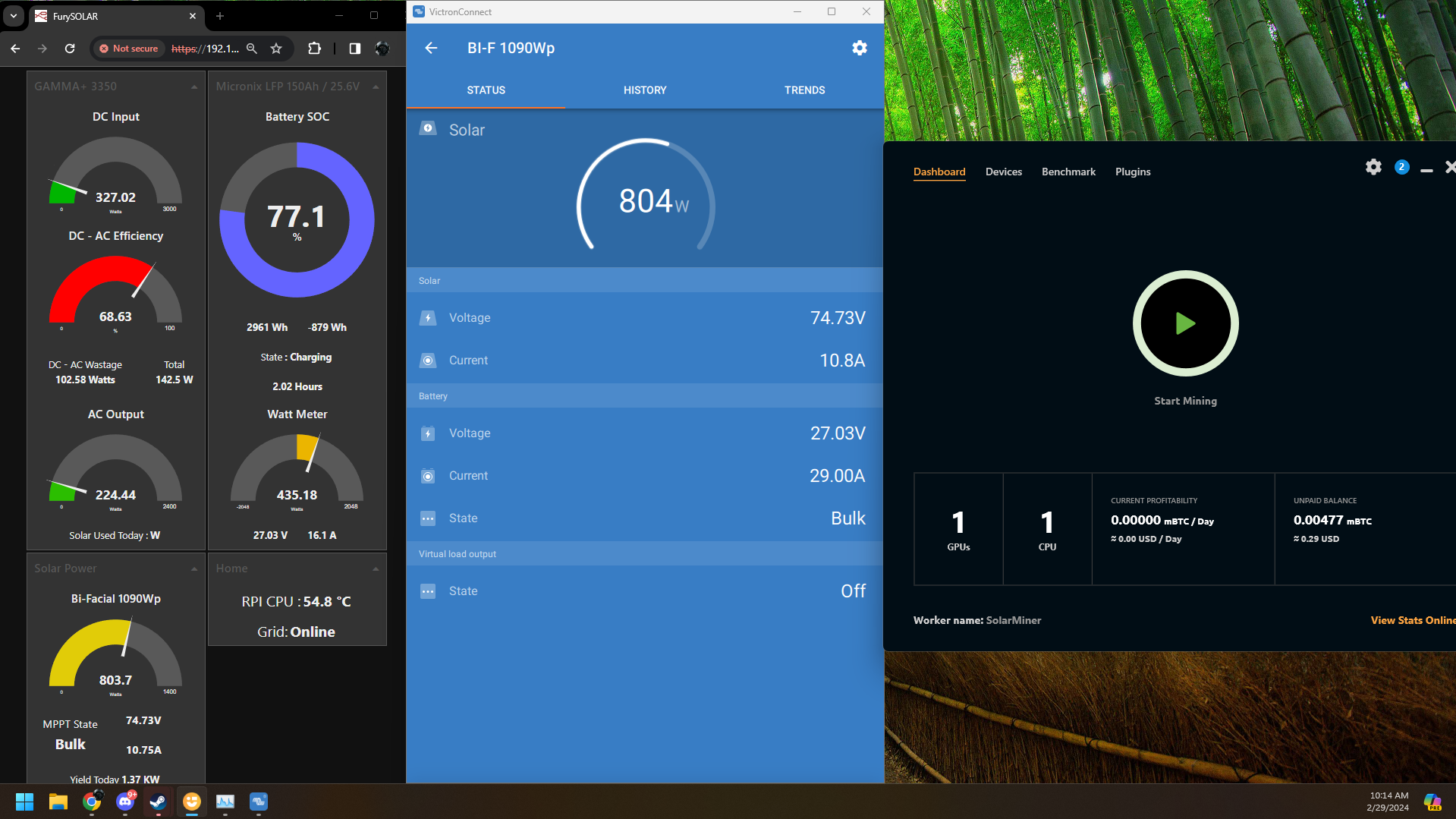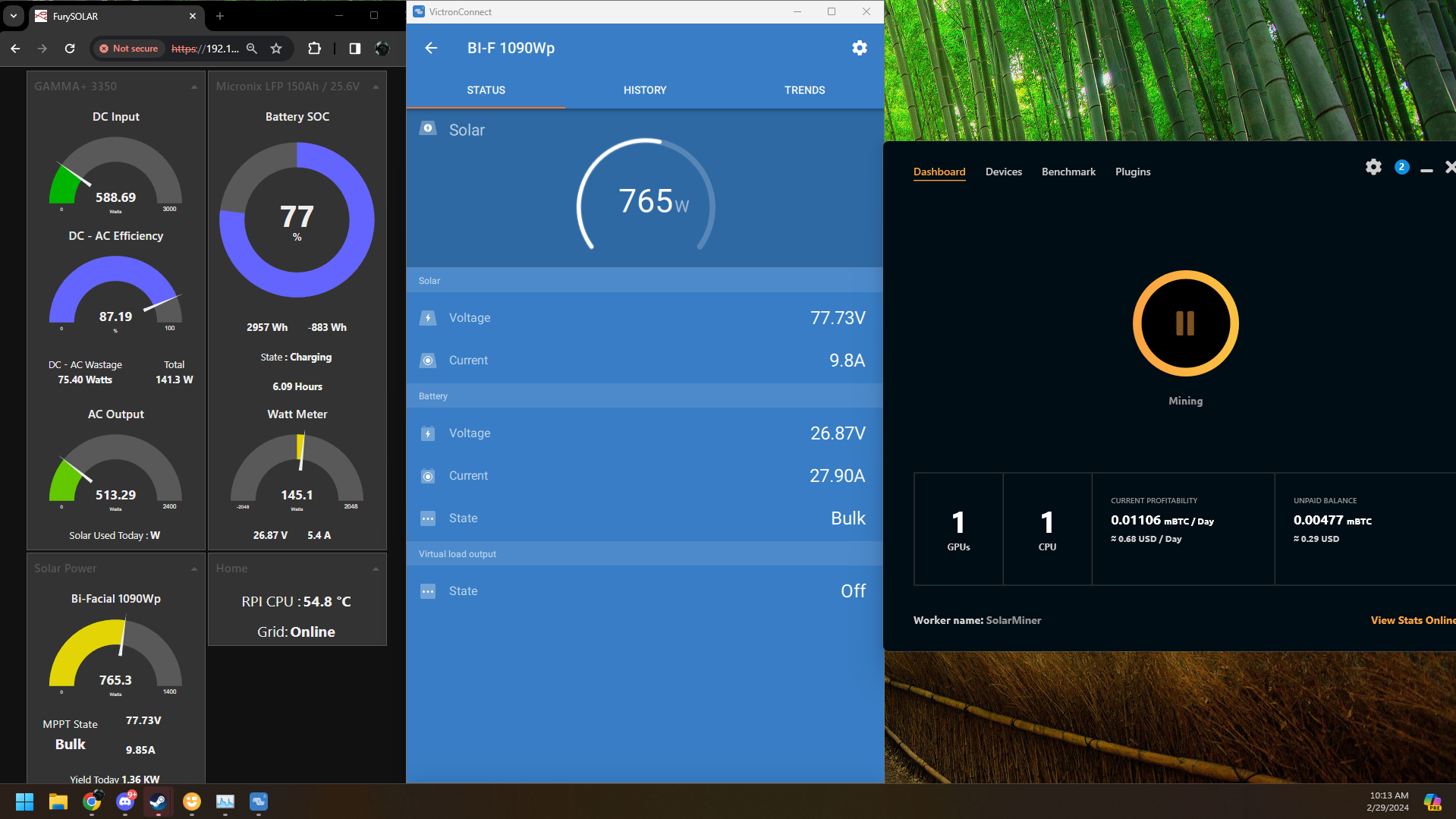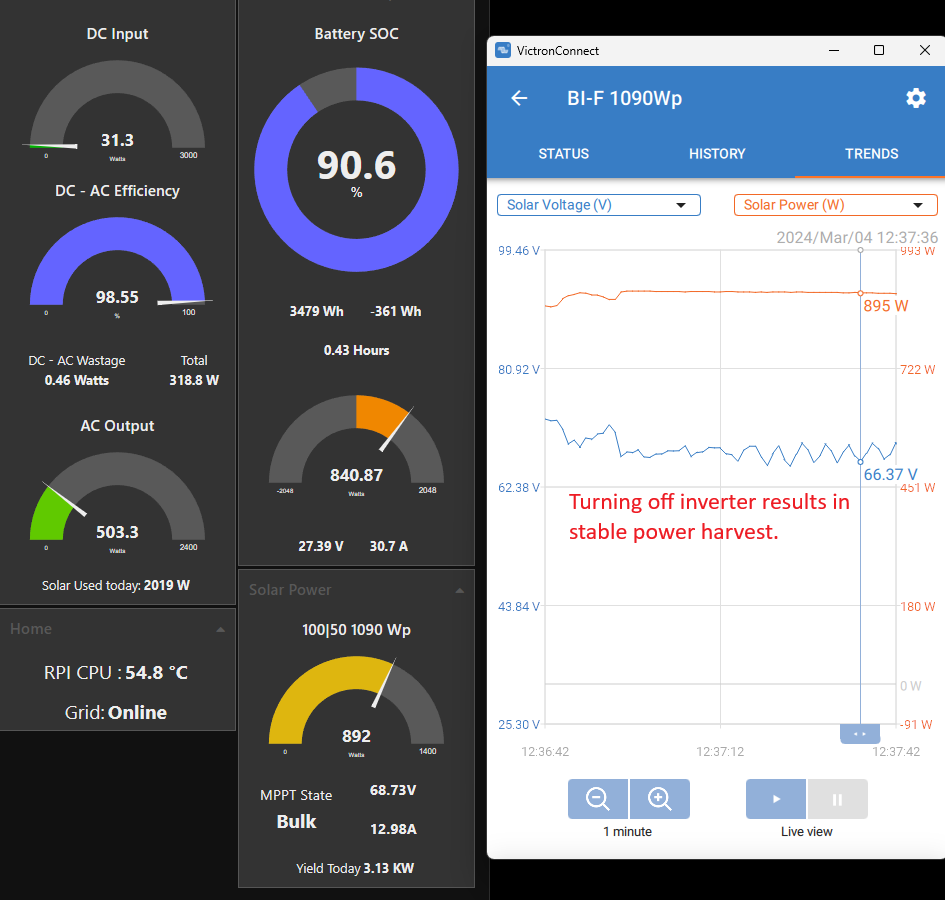Hi guys, I started to notice this issue for quite some time, and I ran some analysis on this to get it clear.
It seems like whenever there is a slight voltage drop on the battery side due to the loads. The MPPT tracking seems to go higher and track less amps than it was able to harvest at a slightly lower voltage which might be its MPP.
1: The load is low, and the MPPT is harvesting more energy.
2: Load increased which caused a slight voltage drop at the battery, and the MPPT increased its tracking voltage and is harvesting less energy.
Link for a video, where I have tried increasing and decreasing the load, and you can see there is something wrong with the tracking of MPP due to a slight voltage drop in the battery.
The power loss is more significant when there is a discharge from the battery where the load needs both Solar and Battery causing even more voltage drop, and it will be 80+ watts of wastage since the MPP voltage goes higher even more.
Initially, I thought it might be due to changes in the sunshine, maybe a cloud was passing by or something. But I don't think that's the case.
 Could this be a faulty one that I have got, or this is how all the MPPTs work?
Could this be a faulty one that I have got, or this is how all the MPPTs work?

